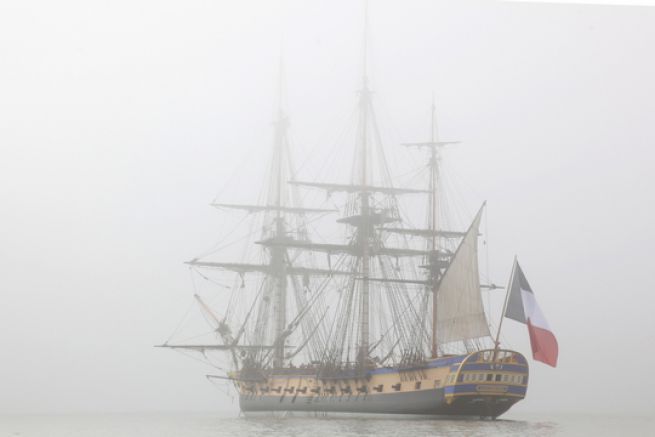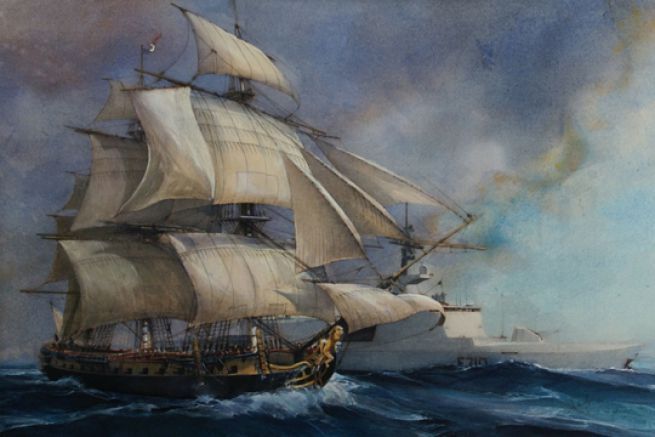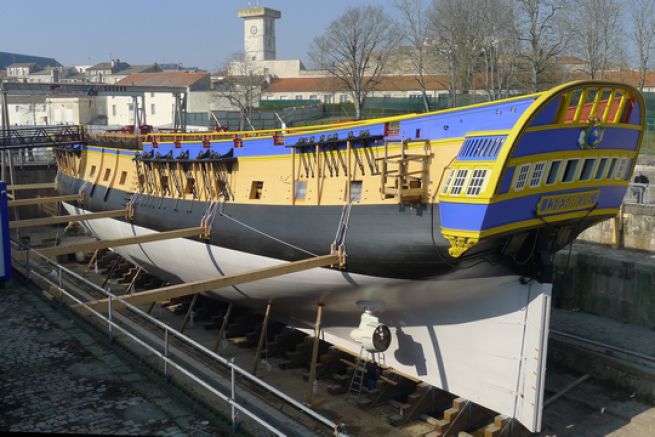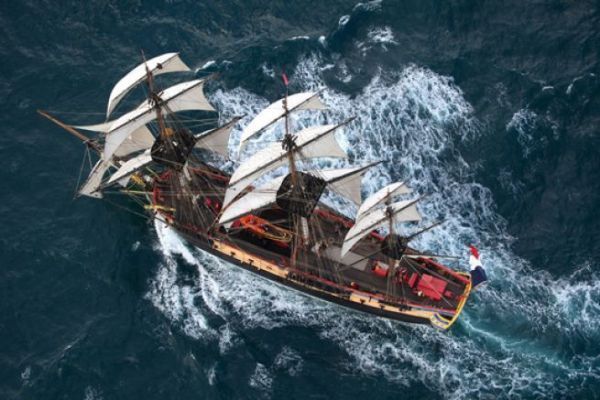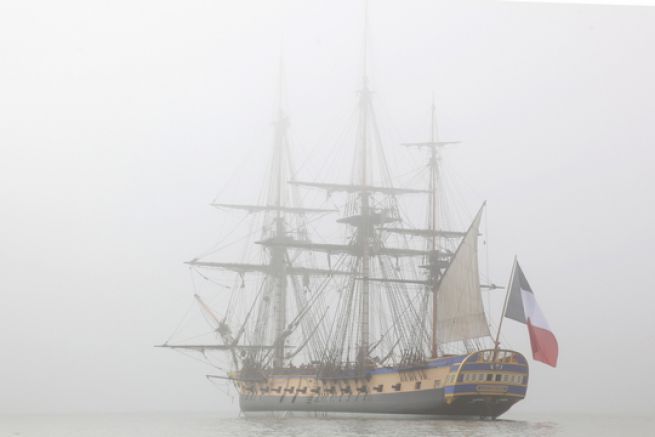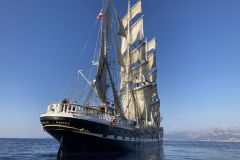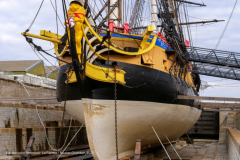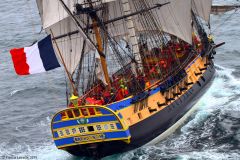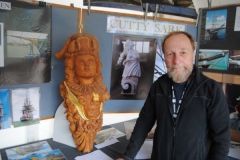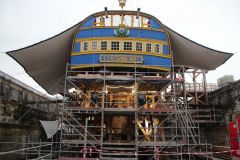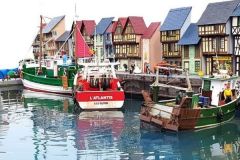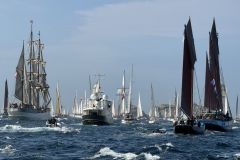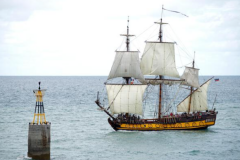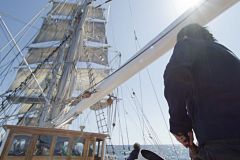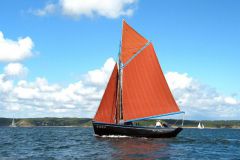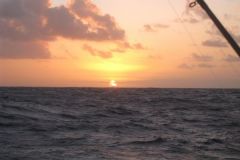On March 20, 1780, La Fayette left for Boston aboard the Hermione - from Rochefort - to help the insurgents gain independence from America. Gilbert du Motier de La Fayette, Marquis de La Fayette, known as"La Fayette" is a French aristocrat, politician and officer, who had a great role in the independence of the United States. During his stay in America in 1777, he became friends with General Washington, and when he returned to France in 1779, he managed to convince the king to help the insurgents against the English.
France agreed to support Georges Washington and that is what the Marquis was announcing. Georges Washington was the Chief of Staff of the Continental Army during the War of Independence. He became the first president of the United States in 1789.
After 38 days of sailing, the Hermione arrived in Boston on April 28. One of his missions was to sail near Long Island and New York to intercept enemy ships. On 7 June 1780, four British ships met the frigate. One of them is an English frigate in the name of HMS Iris of 32 cannons. She is accompanied by three smaller boats. After a long battle, the Hermione succeeded in routing the 4 boats. It suffered many damages: rigging, manoeuvres, sails... and about 10 men died in action.
The Hermione continues to carry out the missions which fall to it, accompanied by the Supervisor, the Amazon or the Astrée, led by La Pérouse. It monitors maritime traffic, accompanies ships, manages the delivery of dispatches, installs batteries ashore..
In mid-March 1781, the Hermione took part in the Battle of Cape Henry. The insurgents manage to defeat the British squadron. Again, in July 1781, the Hermione fought with the Astrée. The two frigates fight against six warships, which protect an English merchant fleet. They succeed in defeating their enemies, but with nightfall, the unarmed ships take the opportunity to escape. The two French frigates were able to bring only one prisoner ship back to Boston.

On 5 September 1781 the Battle of Chesapeake took place. Lafayette, Washington and Rochambeau's account led thousands of men to surround Cornwallis at Yorktown. The British troops were trapped in Chesapeake Bay and were unable to receive aid by sea, a blockade preventing the British fleet from passing. Franco-American troops win the decisive battle of Yorktown on October 17, 1781. Following this victory, the Treaty of Versailles was signed in 1783. The 13 British states thus became independent and formed the United States of America.
The Hermione underwent repairs in Boston until September 10, 1781 and therefore did not participate in the Battle of Chesapeake. It will nevertheless make the siege of Yorktown.
The frigate returned to France in February 1782 and was disarmed at Rochefort.
The end of Hermione's life
Hermione is sent to India to reinforce Pierre André de Suffren's squadron, which is fighting against the British, for control of the Bay of Bengal. Peace was quickly signed and the frigate returned to Rochefort in 1784. It continued to escort merchant ships for the next few years.
In 1793, in the middle of the French Revolution, the Hermione returned to service as a warship. On 20 September 1793, at the exit of the Loire estuary, the captain, Pierre Martin, and the crew - not very experienced - made bad manoeuvres and sank. 14 years after its construction, the Hermione sank in a few hours on the Frou plateau off the Croisic.

 /
/ 